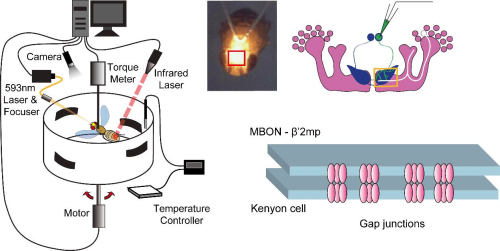Gap junction regulation mechanism in visual learning and memory revealed
On May 24,2016, eLife Journal published a paper “Gap Junction Networks in Mushroom Bodies Participate in Visual Learning and Memory in Drosophila ”. In this paper, the mechanism that gap junction network participates in high level cognitive activities in nervous system of adult animals was uncovered. The authors are LIU Qingqing and colleagues in GUE Aike’s research group.
It is well known that neurons communicate via chemical synapses. Now we know, in addition to this kind of synapses, neurons also communicate via gap junctions, or called electrical synapses. Gap junctions are widely distributed in the brains across species and play essential roles in neural information processing. The complexity of the mammalian central nervous system makes it difficult to determine the function of gap junctions during cognitive processes. In comparison, fruit fly has much simpler neural system, yet still performs sophisticated cognitive functions. However, the role of gap junctions in cognition has rarely been investigated.
Using a flight simulator paradigm and genetic tools, they found that gap junctions are present in Drosophila Kenyon cells (KCs), the major neurons of the mushroom bodies (MBs), and showed that they play an important role in visual learning and memory. Using a dye coupling approach, they determined the distribution of gap junctions in KCs. Furthermore, they identified a single pair of MB output neurons (MBONs) that possess a gap junction connection to KCs, and provide strong evidence that this connection is also required for visual learning and memory. Compared with chemical synapses, gap junctions are simple, fast, and non-discrete for information transfer in neural networks, when fruit fly flies in high speed may dependent this function of gap junction. Their results will promote a new research area of compound neural networks with both chemical synapses and gap junctions, and bring new insight into the synaptic network underlying fly’s visual learning and memory.
LIU Qingqing and YANG Xing are co-first authors, TIAN Jingsong, GAO Zhongbao and WANG Meng participate in the research work, GUO Aike and LI Yan are co-respondent authors.

Fig 1. Setup of the optogenetic flight simulator system and gap junction network present in mushroom bodies in Drosophila (Image by IBP)

